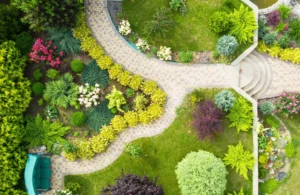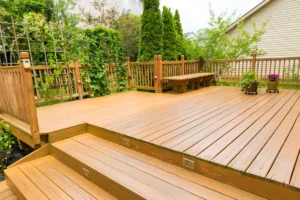Explore expert pool resurfacing, refinishing, and deck repair services. Restore the safety, appearance, and longevity of your outdoor space with professional care.
Pools are a central feature of outdoor living spaces, providing a place to relax, exercise, and gather with family and friends. Over time, however, wear and tear can take a toll on both the pool surface and surrounding deck. Fading, cracks, stains, and rough textures can affect not only the beauty of the pool but also its safety and functionality.
That’s where pool resurfacing, refinishing, and deck repair come in. These essential services help restore pools and decks to like-new condition while also extending their life span. From plaster resurfacing to crack repairs in concrete decking, a comprehensive restoration approach keeps outdoor areas looking clean, modern, and safe.
Why Pool Resurfacing and Deck Repair Matter
Pools are exposed to constant stress from water, chemicals, sun, and temperature changes. Similarly, decks endure foot traffic, weather exposure, and shifting ground. Together, this results in visible damage and structural issues such as:
- Cracks and chips in pool plaster or tiles
- Fading or staining due to UV and chemical exposure
- Rough or peeling pool surfaces
- Crumbling concrete, tile, or wood deck surfaces
- Uneven or unsafe walking areas
These issues not only affect the appearance of your pool area but also create hazards. Resurfacing and refinishing restore both form and function.
Common Signs Your Pool and Deck Need Repair
Knowing when to resurface or repair your pool and deck helps prevent costly problems down the line. Some clear signs include:
- Visible cracks or surface deterioration
- Peeling plaster, flaking paint, or worn finish
- Discoloration that can’t be cleaned
- Loose coping tiles or damaged pool edges
- Uneven or lifting deck surfaces
- Exposed aggregate in concrete decks
- Water loss not caused by evaporation
If any of these conditions are present, timely renovation can prevent further damage and improve usability.
Types of Pool Resurfacing and Refinishing
There are several methods used by professionals to resurface and refinish a pool. The choice depends on the pool’s structure, condition, and desired look.
1. Plaster Resurfacing
This is one of the most traditional methods used for concrete pools. New plaster is applied to replace worn, rough, or stained surfaces.
- Smooth finish
- Available in white, gray, or tinted hues
- Lifespan of 7 to 10 years
2. Pebble Finish
A more durable and luxurious option that blends plaster with natural pebbles.
- Textured appearance
- Resistant to stains and chemicals
- Lifespan of 15 to 20 years
3. Quartz Aggregate Finish
Quartz crystals are mixed with plaster to create a sparkling, strong surface.
- Colorful, polished look
- Long-lasting and stain-resistant
- Often used in premium renovations
4. Tile Resurfacing
Glass or ceramic tile finishes are popular for high-end pools.
- Elegant appearance
- Easy to clean and maintain
- Extremely durable and long-lasting
5. Fiberglass Pool Refinishing
For fiberglass pools, resurfacing typically involves sanding and applying new gel coat layers.
- Smooth and non-porous
- Resistant to algae and staining
- Refreshes faded or blistered surfaces
Types of Deck Repair and Restoration
The pool deck is just as important as the pool itself. It’s where people walk, sit, sunbathe, and entertain. A damaged deck isn’t just unattractive—it can be unsafe. Common deck repair services include:
1. Concrete Deck Resurfacing
If the concrete surface is worn or stained, resurfacing with overlay coatings or stamped concrete restores both style and function.
- Texture options (broom finish, stamped, brushed)
- Anti-slip treatments for safety
- Custom color stains and sealing
2. Crack Repair and Joint Filling
Cracks in concrete or pavers can be filled with flexible, waterproof sealants to prevent expansion and water intrusion.Pool Resurfacing, Refinishing, and Deck Repair
- Structural reinforcement
- Prevents weeds and debris buildup
- Improves long-term stability
3. Tile or Stone Deck Repair
For decks made of travertine, tile, or natural stone, repair includes:
- Re-grouting or re-leveling pavers
- Replacing broken tiles
- Applying sealers to enhance color and protect surface
4. Wood Deck Repair
In older wooden decks, services may include:
- Replacing rotted boards or loose rails
- Sanding and staining for UV protection
- Fixing drainage or shifting issues
Surface Coating and Sealing Options
After resurfacing or repairs are made, sealing or coating the surface is a vital step. It helps protect from weather damage, pool chemicals, algae growth, and UV rays.
- Acrylic coatings: Ideal for concrete, add color and slip resistance
- Polymer overlays: Great for stamped patterns and texture
- Clear sealers: Preserve natural look of wood, stone, or tile
- Cool deck coatings: Reduce heat absorption for comfort underfoot
Benefits of Professional Resurfacing and Deck Repair
Hiring trained specialists for your pool and deck work ensures a longer-lasting and high-quality result. Benefits include:
- Improved safety: Fixing cracks and slippery surfaces prevents accidents
- Enhanced appearance: New finishes instantly boost curb appeal
- Increased home value: A modern, functional outdoor space is a top buyer attraction
- Lower maintenance: New surfaces are easier to clean and maintain
- Extended lifespan: Resurfacing helps avoid costly structural damage
Professionals also help ensure that all work is compliant with local codes and regulations, including drainage and anti-slip requirements.
Maintenance Tips After Resurfacing and Repair
To keep your newly resurfaced pool and repaired deck looking and functioning well:
- Balance pool chemicals regularly to avoid staining or etching
- Avoid metal tools when cleaning new plaster
- Clean your deck surface weekly to prevent debris stains
- Re-seal deck coatings every 2–3 years, depending on exposure
- Trim nearby trees or shrubs to reduce organic staining
- Monitor water levels to detect potential leaks early
Proper maintenance can extend the life of your new surfaces for many years.
Frequently Asked Questions (FAQs)
Q: How often should a pool be resurfaced?
A: Most concrete pools need resurfacing every 10–15 years, depending on material type, usage, and maintenance.
Q: What is the difference between refinishing and resurfacing a pool?
A: Refinishing usually refers to cosmetic improvements like repainting or re-coating. Resurfacing is a more in-depth process that repairs and replaces the underlying surface layer.
Q: Can I resurface a pool myself?
A: While small repairs may be DIY-friendly, full resurfacing involves specialized tools, materials, and knowledge. It’s best handled by professionals.
Q: How long does pool resurfacing take?
A: Depending on size and complexity, most resurfacing projects take between 5 to 10 days to complete.
Q: What causes cracks in pool decks?
A: Deck cracks can result from soil movement, weather changes, tree roots, or poor original installation.
Q: Is it cheaper to repair or replace a deck?
A: In most cases, repairing is more affordable, especially if structural components are still in good condition. Replacement may be needed if the damage is extensive or safety is compromised
Q: What’s the best finish for a long-lasting pool surface?
A: Pebble and quartz finishes typically offer the best longevity and durability, lasting 15–20 years with proper care.
Conclusion
Maintaining a beautiful and safe backyard pool area goes beyond regular cleaning. Over time, pool resurfacing, refinishing, and deck repair become essential steps to protect your investment, enhance comfort, and ensure safety. With expert service and the right materials, your pool and deck can be restored to their full potential—offering years of relaxation, beauty, and value to your home.
A properly resurfaced pool and a solid, attractive deck do more than just look good—they create a welcoming environment where memories are made and outdoor living shines.



